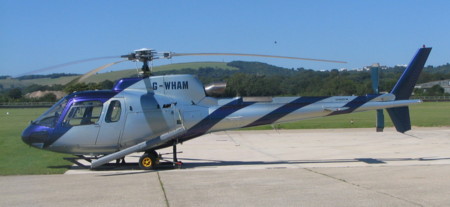 |
The Aerospatiale AS350 Ecureuil (`Squirrel')
was intended as a successor to the Allouette series (see under
military helicopters), but has found service primarily with civil
operators. When it first flew in June 1974, its fibreglass rotor hub
with elastomeric bearings was one of the most advanced in the world.
It normally seats four, but can be modified for specialist roles
such as air ambulance (for which it is really a bit too small). It
is powered by a French Turbomeca Arriel turbine engine; a version
for the American market, called the AStar, is powered by an American
Lycoming turboshaft. Over 3,000 of all variants, both civil and
military, have been built. This Ecureuil was
at Goodwood in August 2007. |
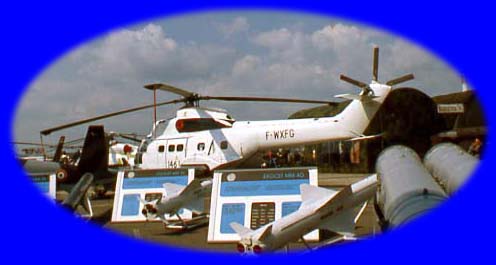 |
The Aerospatiale AS332 Puma is a medium-lift
helicopter designed for commercial operations such as offshore
oil-rig support. Maximum accommodation is 23 passengers plus two
crew. It has been in service since the 1970s. It is one of three
types (the others being the Gazelle and Lynx) produced jointly by
Aerospatiale in France and Westland in the UK.
This demonstrator was pictured at Paris - Le
Bourget in the early 1980s. |
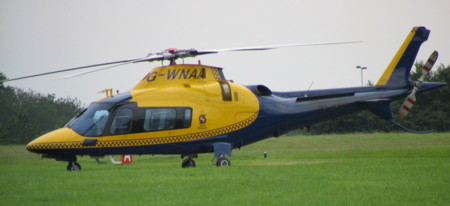 |
The Agusta 109 is the most successful
helicopter developed by the Italian Agusta company. First flown in
August 1971, it quickly became established as a reliable and robust
light-medium load-carrier. Many versions have been built both for
military and civil roles; it is widely used by several countries'
police forces. Typical seating is for six people plus two crew, but
it can lift up to 1,200Kg depending on configuration.
This A109 was at High Wycombe on a wet day
in July 2006 (photograph by Charles). |
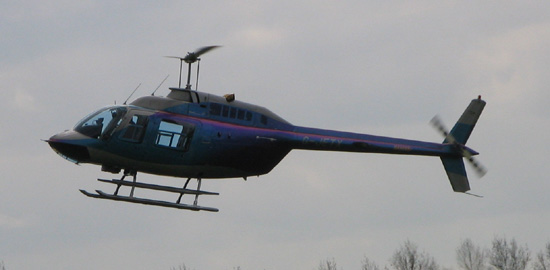 |
The Bell 206 JetRanger is one of the most
successful and popular helicopters ever built. It first flew in
December 1962, since when well over 5,000 have been built. It has
one Allison turboshaft engine, making it very reliable and
relatively economical for a helicopter. It is also used by many air
forces, including the US Army, who call it the OH58 Kiowa.
This picture shows a JetRanger landing at
Goodwood in April 2006. |
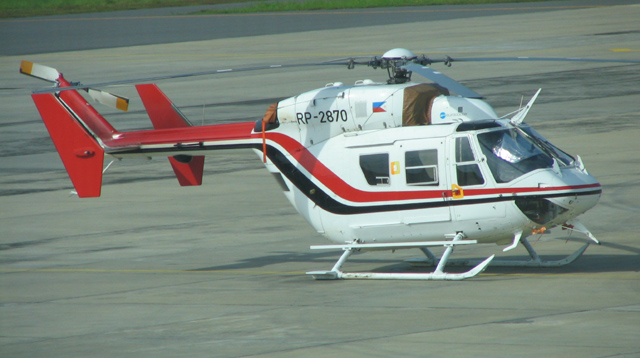 |
The Bolkow / Kawasaki BK117 is a light
transport helicopter which can carry up to ten people, though a more
normal layout is for six. It is a joint venture between MBB in
Germany and Kawasaki in Japan. The rotor head and main systems are
based on the Bolkow 105 (see below). It can cruise at a respectable
155mph for a range of about 310 miles. It first flew in June 1979.
This one was at Davao in August 2005. Note the
cable cutter above the windscreen, designed to save the rotor head
from being disabled if the helicopter accidentally flies into a
power cable. |
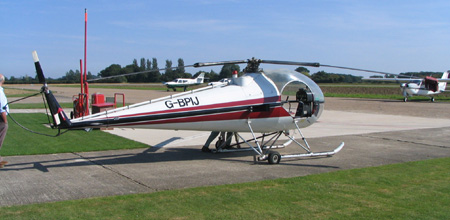 |
The Brantly B2 is a very early light
helicopter designed by N.O. Brantly. The prototype first flew in
February 1953. A very unusual feature is the different (much
thicker) rotor blade section on the innermost third of the rotor,
and the lead/lag hinges being offset to the junction between the
blade sections. It is a two seater, powered by a 180hp Lycoming
engine. Top speed is 100mph and range is 250 miles.
This one was at
Seething, July 2005 |
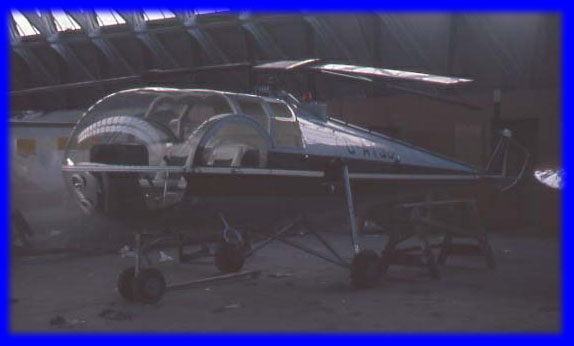 |
The Brantly 305 is a scaled-up, five person
version of the original 1953 Brantly B-2, a very early helicopter
design by American designer N.O. Brantly. It is powered by a
single 300 horsepower piston engine. The 305 first flew in January
1964. Its performance is adequate, but not brilliant: it can lift
500Kg and has a range of 220 miles.
This is one of the few 305s imported to
Britain, and was seen at Sunderland in July 1976. |
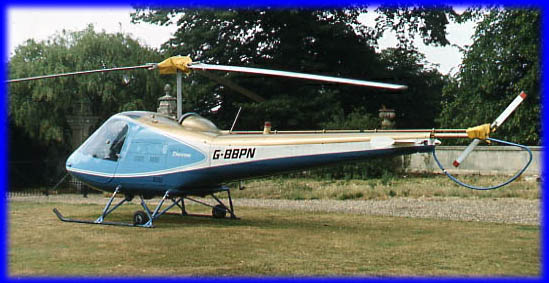 |
The Enstrom F28 is a very capable and popular
light helicopter. Powered by a single 200 horsepower piston engine,
it seats three people and is relatively economical (`relatively'
being important in the horribly expensive world of helicopter
flying). It first flew in May 1962, at which time it must have
looked very futuristic. Several hundred have been built and are in
service worldwide. This elegantly
painted example was parked on the lawn of a country house, Castle
Ashby in Northamptonshire, in July 1976. |
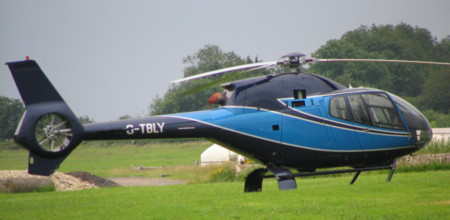 |
The Eurocopter EC120 Colibri is a chunky
light helicopter built in France and China. It is a five seater,
powered by a Turbomeca Arrius engine of 450shp, which gives it a
gross weight of 3,770lb and useful load of 1,660lb. Rotor diameter
is 32'10". Several hundred have been built; the type is still in
production in 2007, deliveries having started in 1998.It has a range
of 475 miles and top speed of 170mph.
This one was at High Wycombe in July 2007. |
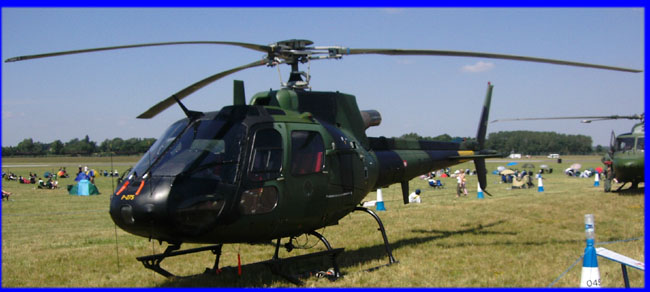 |
The Eurocopter AS550 Fennec is essentially a
military derivative of the AS350 Ecureuil (see above). It is very
similar to the earlier civial aircraft except that it has more
powerful engines, updated systems and is strengthened for military
use.
This one, operated by the Danish air force, was
at Fairford in July 2005. |
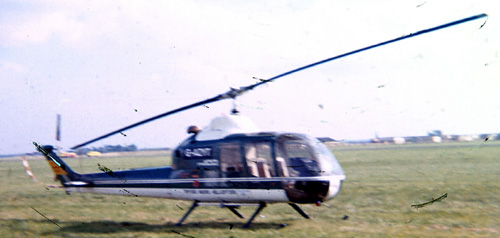 |
This pretty awful picture is the
only one I have of a Fairchild-Hiller FH1100. This was an entry in
the US Army's observation helicopter competition (in which it was
designated OH-5), and first flew in January 1963. The competition
was won by the Hughes OH-6, but Fairchild (who had just taken over
helicopter pioneer Hiller) decided to proceed with it as a private
civil venture. It can seat five. Powered by an Allison 250
turboshaft of 317shp, its top speed is 125mph and range is 350
miles. Rotor diameter is 35 feet 4 inches. It was built in fairly
small numbers.
This photograph was taken on an ancient Kodak
Brownie camera at Teesside in September 1974 |
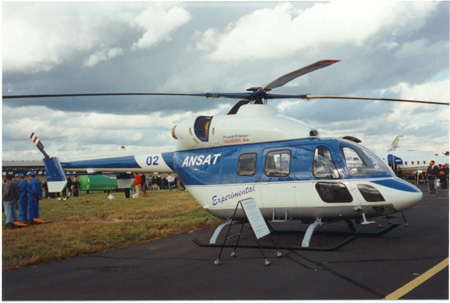 |
The Hindustan Aeronautics (HAL) ALH (Advanced Light Helicopter)
first flew in August 1992. It is the first helicopter to be designed
and built solely in India. It is powered by two Turbomeca TM333
turboshafts of 1,000shp each, which gives it a top speed of 150mph
and range of 490 miles. Maximum gross weight is 11,000lb. It is a
medium sized machine, with a rotor diameter of 43 feet 4 inches,
which can seat up to 14 people at a squeeze.
This one was at Farnborough, 1998 |
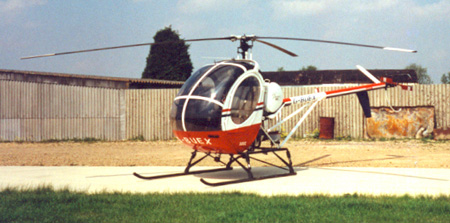 |
The Hughes 269 (sometimes designated Hughes
300) is a three seat light training and utility helicopter which
first flew in October 1956. It is a very small, light machine (rotor
diameter is 26 feet 10 inches; maximum weight is 2,050lb). Its
190hp Lycoming engine gives it a top speed of 95mph, and it has a
range of 230 miles. Apart from
civil sales, it has been widely used by the US Army (800 were built
as the TH-55 Osage). This one was at Fenland
in 1997. |
|
|
The Hughes 500 is a powerful, rugged, high
performance helicopter derived from the US Army's OH6 Cayuse. It can
theoretically carry seven people, but this must be a heck of a
squeeze. It first flew in 1963 and has been progressively developed
since then. Confusingly, some Hughes 500s are also referred to as
the Hughes 369. It is powered by a single Allison turboshaft engine
(essentially a turboprop fitted with a gearbox to direct the power
vertically to the rotor, and a rotor clutch for starting.) Some
2,000 have been built, including military versions. It can carry up
to 540 Kg for up to 380 miles. The top one (G-GASA) was
pictured at Shoreham in July 1984, and the lower at Top Farm in
2004. |
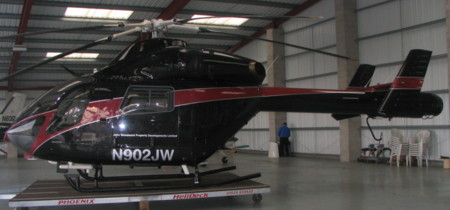 |
McDonnell Douglas Helicopters MD-900
Gamston, November 2007 |
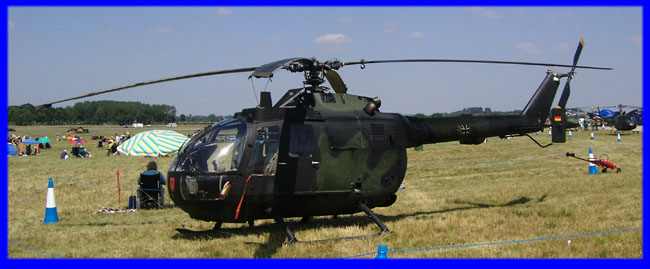 |
The wave of consolidation sweeping through
the European aircraft industry in the 1970s created a German
conglomerate called Messerschmitt - Bolkow - Blohm (MBB). Its first
production helicopter was the MBB105. Although the first version
flew as long ago as 1964, they are still widely used today. The four
bladed rotor is relatively quiet, and the turbine engine very
reliable, though expensive to run. Normally seating five people, it
can also be converted as an air ambulance with room for two
stretchers.
This one was at Fairford in July 2005. |
|
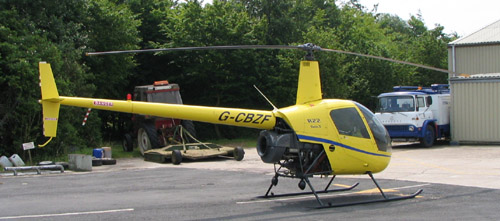 |
The Robinson R22 is a two seat light
helicopter designed in America by Franklin Robinson. The first
development aircraft flew in 1975. The main production version, the
Beta, was introduced in 1985. It is very popular, not least because
it makes helicopter flying affordable: both the fuel and the
maintenance costs make helicopters outrageously expensive to
operate. Robinson deliberately aimed to reduce these costs by making
the R22 as simple as possible, roughly halving the cost when
compared to the then contemporary machines. It is powered by a 125hp
Lycoming engine, driving a simple two bladed rotor of diameter just
over 25 feet. It will travel at 95mph for up to 360 miles. About
3,000 have been built to date, and it remains in production (as of
March 2006). This one was photographed at
Earl's Colne in June 2006. |
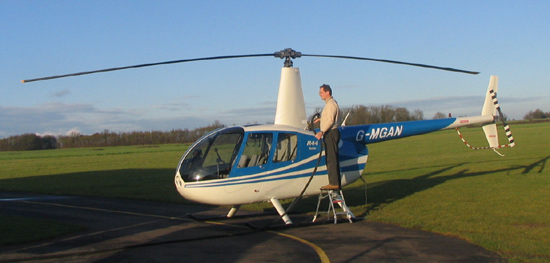 |
The Robinson R44 is a four seat derivative of
the R22. It competes with the far more expensive Bell JetRanger
series, but is far cheaper. It first flew in March 1990, since when
over 1,000 have been built; it remains in production. its 225hp
Lycoming O-540 delivers a cruising speed of 130mph and range of 400
miles. With 33 foot diameter rotors, it is a substantially bigger
aircraft than the R22, but is similarly economical to operate and
correspondingly popular. This one called in to Top Farm for fuel in
December 2005. |
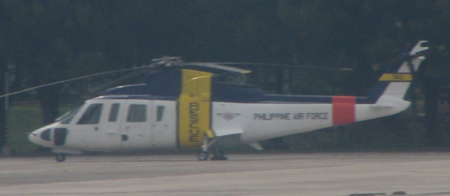 |
This very blurred picture of a Sikorsky S-76
was taken at Cebu in July 2005. The S-76 was developed as a
successor to the earlier, and very popular, S-61 / Sea King range
(see under military helicopters). It first flew in March 1977, since
when about 500 or so have been built. It has two 650hp Allison 250
turboshaft engines, which enable it to cruise at over 140mph for
almost 700 miles (depending on payload). Typical seating is for 12
passengers plus two crew. |